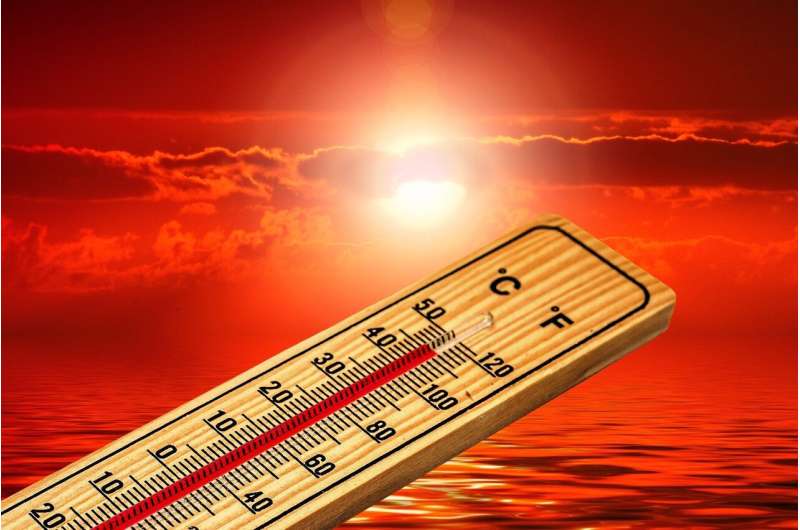Dual impacts of extreme heat, ozone disproportionately hurt poorer areas

Scientists at UC San Diego, San Diego State University and colleagues find that extreme heat and elevated ozone levels, often jointly present during California summers, affect certain ZIP codes more than others.
Those areas across the state most adversely affected tend to be poorer areas with greater numbers of unemployed people and more car traffic. The science team based this finding on data about the elevated numbers of people sent to the hospital for pulmonary distress and respiratory infections in lower-income ZIP codes.
The study identified hotspots throughout the Central Valley, areas of San Diego County east of downtown San Diego, and places like San Bernardino, where Los Angeles basin smog is often trapped by surrounding mountain ranges, among others.
Results appear the week of May 24 in the journal Proceedings of the National Academy of Sciences. The Office of Environmental Health Hazard Assessment, a division of the California Environmental Protection Agency, funded the research.
"This information can be used to activate measures to protect populations in areas which we know will be at increased risk of experiencing a health burden from these co-occurring environmental events and maximize public health benefits," said study lead author Lara Schwarz, a graduate student who is in a joint doctoral program at San Diego State and the Herbert Wertheim School of Public Health and Human Longevity Science at UC San Diego.
In places like California, these public health hazards are expected to appear in unison more frequently as the climate continues to warm and heat waves become more prevalent and long-lasting. The study could enable more targeted public health efforts because of its unprecedented consideration of two common hazards in tandem and its relatively high-resolution breakdown of where they are most likely to cause problems. Previous studies had tended only to evaluate city- or regional-level health trends.
"Understanding the health impacts of compounding environmental events such as extreme heat and various air pollutants like tropospheric ozone becomes a priority in a changing climate," said study co-author Tarik Benmarhnia, a climate change epidemiologist with appointments at UC San Diego's Scripps Institution of Oceanography and Herbert Wertheim School of Public Health and Human Longevity Science. "Such events are more frequent, intense and tend to co-occur, potentially creating synergistic effects on population health impacting the most vulnerable communities."
The work could inform early warning systems and prioritize resources more efficiently than at present, the researchers said.
Ozone, a gas and a variant molecular form of oxygen, is formed in the lower atmosphere by the reaction of various hydrocarbons to sunlight, especially during hot days. Car exhaust produces such hydrocarbons. Ozone can exacerbate asthma and other respiratory conditions among vulnerable people and is more prevalent in urban areas with more traffic.
Extreme heat can similarly affect respiratory health by itself or in combination with high ozone levels.
Schwarz's team notes that vulnerability to the excessive heat/ozone combination seems to be diminished in wealthier ZIP codes and correlated results with factors that include better access to healthcare, lower stress levels, and more exercise.
"When considering the ZIP code level, certain areas observed strong joint effects," said the study authors. "A lower median income, higher percentage of unemployed residents and exposure to other air pollutants within a ZIP code drove stronger joint effects; a higher percentage of commuters who walk/bicycle, a marker for neighborhood wealth, showed decreased effects."
More information: Lara Schwarz el al., "Spatial variation in the joint effect of extreme heat events and ozone on respiratory hospitalizations in California," PNAS (2021). www.pnas.org/cgi/doi/10.1073/pnas.2023078118
Journal information: Proceedings of the National Academy of Sciences
Provided by University of California - San Diego




















